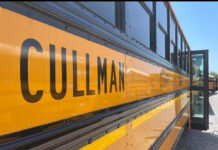“Every storm, no matter how big and strong, passes eventually. Just know and remember that your spirit is much bigger and stronger than any storm that comes your way, and that all storms will fall apart long before you ever would.” These profoundly encouraging words are from author and photographer Doe Zantamara. You can find more inspiration from this writer at her Facebook page, Happiness in Your Life.
Frau Ruehl, our fictional heroine of the folktale, “WUNDERGARTEN,” could relate to the real-life wisdom of Ms. Zantamara. In the story, the widowed German strawberry farmer survived the death of her beloved husband, a woodcutter killed by a fallen tree, and she had faith to help her grief-stricken daughter heal.
Storms come to every life if one lives long enough, and they have throughout human existence. In the story from the holy Bible, steadfast Noah guides his ark through the floods knowing he will eventually dance in the sunshine on the rain-soaked earth.
Next week in Alabama, we pause on April 27 to remember the intense storms of 2011. In 18 hours of horror, 62 tornadoes were tracked across 1,200 miles; 320 died in the twister barrage, with many more injured. We honor those who died, and we thank the universe for giving us the resilience to plow forward.
“WUNDERGARTEN” is set in the 1870s of Colonial Cullman, Alabama. Those who founded this German colony in America were filled with optimism and “can-do” spirit, but they had also heard the cautionary tales of natural disasters and mass civilian deaths in our blessed land: springtime tornadoes, autumn wildfires, torrential floods. Nature was not and is not in the controlling hands of humankind.
Here are some of the worst storms and horrors America has weathered, and I’m not even including the 1,118,500 killed by the COVID-19 pandemic, the 700,000 dead from the HIV-AIDS pandemic or the 675,000 who lost their lives in 1918-1920 during the influenza pandemic:
The GREAT NATCHEZ TORNADO of 1840 hit Mississippi on what had seemed to be a typical Thursday on May 7, 1840. This storm was the second deadliest tornado recorded in American history. A minimum of 317 were killed and more than 100 beyond that death toll were injured. It formed about 20 miles southwest of Natchez and followed up the Mississippi River, uprooting forests on both shores. The windstorm tossed 116 flatboats and a piece of a steamboat window was found 30 miles away. It was reported, “The air was black with whirling eddies of walls, roofs, chimneys and huge timbers from distant ruins…all shot through the air as if thrown from a mighty catapult.”
The GREAT FLOOD of 1862 is the largest in recorded history in California, Oregon and Nevada. Rain inundated the far west from November 1861 into January 1862. Warm weather melted snow in the mountains causing entire towns to be swept away and leaving fields in complete ruin. At least 4,000 people were estimated to have been killed in California, 1% of the population at that time.
The SCHOOLHOUSE BLIZZARD of 1888 hit the U.S. plains states on Jan. 12. The ice storm came so quickly and after a mild morning that many people were caught unaware, including children in one-room schoolhouses in various locations. People had ventured from the relative safety of their homes to do chores, go to town, attend school, and enjoy the day. This sudden blizzard recorded 235 killed but some estimate the death toll at 1,000.
One story from this storm is that schoolteacher, Lois Royce, became trapped with three of her students in her schoolhouse. By 3pm, they had run out of heating fuel. Her boarding house was only 82 yards away, so she attempted to lead the children there. However, visibility was so clouded they became lost and the children, two nine-year boys, and a six-year-old girl, froze to death. The teacher survived but her feet were frostbitten and had to be amputated.
The SULTANA STEAMBOAT EXPLOSION involved a commercial side-wheel steamboat that exploded on the Mississippi River on April 27, 1865, killing 1,169 people in what remains the worst maritime disaster in United States history. No one was ever held accountable. This tragedy was overshadowed in the media with events surrounding the end of the American Civil War. The killing of President Abraham Lincoln’s assassin, John Wilkes Booth, happened only the day before this horrific happening on the river about 7 miles north of Memphis.
The JOHNSTOWN FLOOD occurred on May 31, 1889, when a dam collapsed upstream of the town of Johnstown, Pennsylvania. The break was caused by the swelling of the Little Conemaugh River after several days of extremely heavy rainfall. 2,208 people drowned in the flood waters.
The HINCKLEY, MINNESOTA FIRE claimed 418 lives in the pine forests, throughout 200,000 acres in September 1894. Fires spread due to lumber harvesting techniques that stripped trees of their branches, leaving the ground littered with flammable debris. Some residents survived by climbing into wells, ponds or the Grindstone River. Others fled aboard two crowded trains that pulled out of the town minutes ahead of the fire.
The 1900 GALVESTON HURRICANE is the deadliest natural disaster in United States history, killing as many as 12,000 people, many in the port city of Galveston, Texas. The storm destroyed 7,000 buildings in Galveston, including 3,636 demolished homes. Approximately, 10,000 people were left homeless. The greatest “Night of Horrors,” happened on Sept. 8, 1900, when a 15-foot storm surge killed 8,000 in Galveston with the townsfolk awakening to hundreds of lifeless bodies on the streets. Prior to the storm, Galveston was the largest city in Texas.
The 1906 SAN FRANCISCO EARTHQUAKE devasted the California port city on Wednesday, April 18. More than 3,000 people died and over 80% of the city was destroyed. This was the deadliest earthquake in the history of the U.S.
In popular culture, the earthquake is shown towards the end of MGM’s 1936 film, “San Francisco,” and depicted near the beginning of the 1932 film, “Frisco Jenny.”
The MONONGAH MINING ACCIDENT happened less than three weeks before Christmas, on Dec. 6, 1907, and is described as “the worst mining disaster in American history.” In all, 362 miners were killed working underground in Monongah, West Virginia. An official cause of the explosion that caused the mine to collapse was not determined, but investigators at the time believed an electrical spark from one of the miners’ open flame lamps ignited coal dust or methane gas.
The 1936 NORTH AMERICAN HEAT WAVE had a death toll of at least 5,000 people and huge numbers of crops destroyed by the lack of moisture. Most of these Americans died of heat stroke and heat exhaustion. This was before much of the public had the convenience of air-conditioned cooling. Many of the fatalities were elderly residents of densely populated areas of Chicago, Detroit, St. Louis, Milwaukee and Cleveland.
The 1930s (the Dust Bowl years of John Steinbeck’s “Grapes of Wrath”) are remembered as the driest and hottest decade for the United States. More than 5,000 died. The summer of 1936 was notable for the most widespread and destructive heat wave to happen in the Americas in hundreds of years.
HURRICANE KATRINA, a devastating Category 5 hurricane, had a death count of 1,392 and caused damage estimated at more than $100 billion, particularly in the city of New Orleans. The late August 2005 storm experienced the most loss of lives due to flooding.
WEATHERING STORMS lessons we learned from each of these disasters are to be prepared and have a coordinated response. Storms happen, but we can be more ready, more compassionate and more united, not divided.
CELEBRATING IN THE WUNDERGARTEN – This storytelling culinary series mostly imagines tasty, traditional foods from the recipe box our heroine, Frau Ruehl, brought with her from Germany to what is present-day Cullman County, Alabama. This week, we imagine tomatoes and fresh vegetables from her kuchengarten (kitchen garden) blended (your choice) with vodka and the whiz-bang of a 21st century, electrified food blender.
Various beverages have been inspired to give courage or reward resilience WEATHERING STORMS. Notable are the Dark ‘N’ Stormy highball and the Famous Pat O’Brien New Orleans Hurricane. We shopped at the Festhalle Farmers Market, and add this bolstering bev to the mix with the:
CULLMAN COUNTY TOMATO TORNADO MOCKTAIL/COCKTAIL
INGREDIENTS
- 2 -2.5 lbs. fresh, ripe tomatoes
- 1 small red onion
- 1 small fresh green or red chili pepper
- 2 tsp. freshly squeezed lemon juice
- Salt, to taste
- Freshly ground black pepper, to taste
- Hot sauce, to taste
- Grated horseradish, to taste
- Pickled green beans, dill pickle spear, pickled okra, even fried Brickyard bacon for garnish
- For the cocktail: 6 oz. vodka
DIRECTIONS
- Roughly chop tomatoes, onion and chili pepper.
- Puree those ingredients in a blender until smooth. Do this in batches, if needed.
- Run pureed mixture through a sieve to remove seeds and peels.
- Add lemon juice, salt, pepper and hot sauce or horseradish.
- Place in a pitcher and cover. Chill spiced-up mixture until very cold, at least an hour and up to 2 days if your power doesn’t go off during the storm.
- When making the cocktail, pour 1 1/2 oz. vodka into highball glass filled with ice. Pour 3 oz. of tomato mixture on top of vodka. (For a virgin “Tomato Tornado” mocktail, simply skip the vodka.)
- Add extra seasonings to taste, if desired. Garnish with a pickled something and maybe a strip of fried bacon.
HAPPY WEATHERING STORMS and AUF WIEDERSEHEN Y’ALL!
Find all columns in this series at www.cullmantribune.com/tag/celebrating-in-the-wundergarten.





























